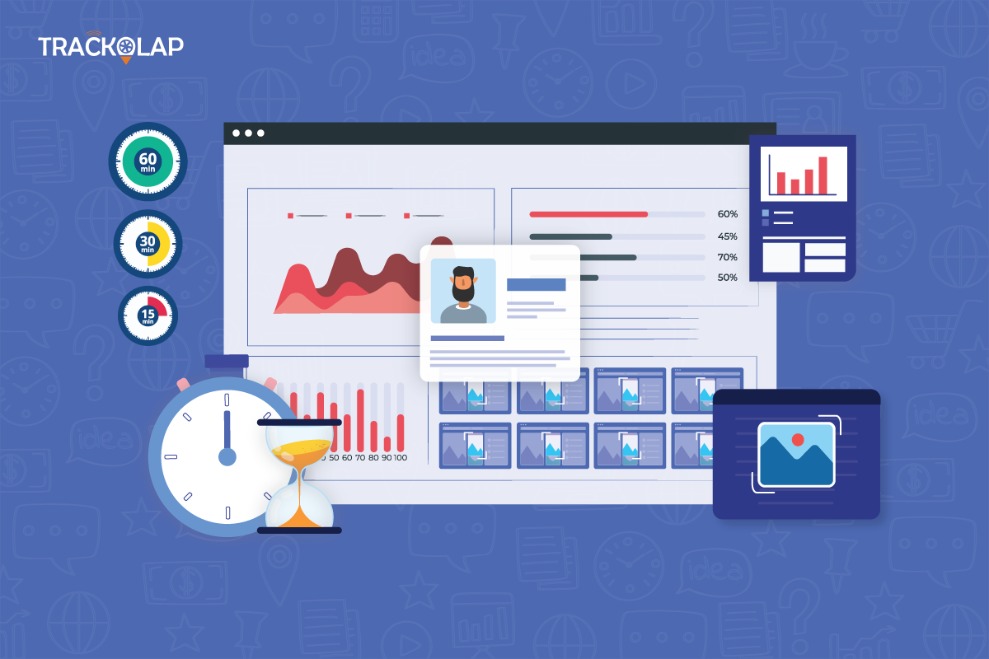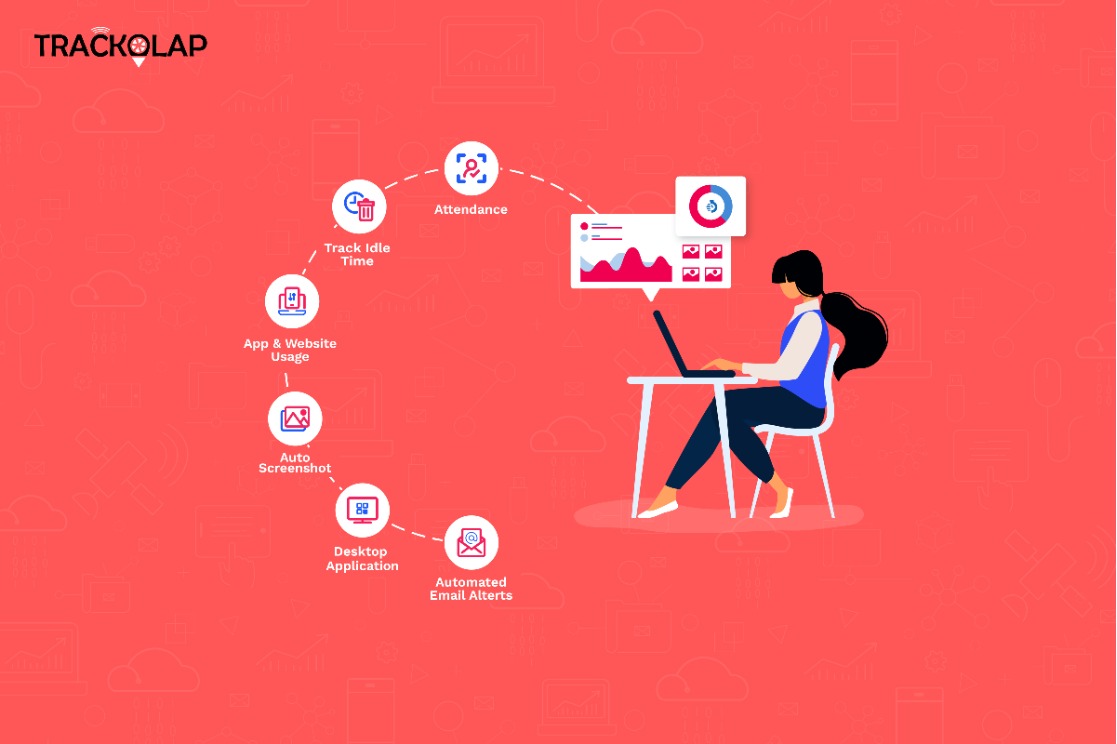
Top 6 Remote Task Scheduling Techniques To Follow During COVID-19 Second Wave
In all this panicky situation, ensuring that your employees meet given deadlines and stay productive — is impossible. But, we have to do it, in Albert Einstein's words —
"Life is like riding a bicycle. To keep your balance, you must keep moving."
Being a business leader, it is your responsibility to make your team keep on moving and thriving. To do so, the TrackOlap team would like to share powerful remote project scheduling techniques with you. These scheduling techniques have helped our team a lot during the COVID-19 second wave.
Let's see how you can help your remote team with psychological task scheduling techniques.
Remote Work Scheduling Techniques to Grow During COVID-19 Second Wave
Before you start implementing our suggested task scheduling techniques, remember to first measure your team's peak productivity time. Usually, productivity depends on circumstances, personalities, and energy levels. In fact, every person has a different productivity peak time frame.
So, we suggest first analyzing your team's productivity report on our remote tracking software. Once you know when your employees are highly productive, you can push it further by using the following scientifically proven scheduling techniques:
Time Blocking Technique
Time blocking is a simple method of creating your employees' schedules in advance. It is a task scheduling technique where you have to assign a task along with time to complete it. Once you have a task and time sorted, you can easily upload it on our in-built calendar so your employees can access it.
While creating time blocks for your remote team, keep reactive and proactive blocks in your mind. Proactive blocks focus on important tasks that you must get done—these tasks require your undivided attention, like creating reports, drafting important documents, etc. On the contrary, reactive blocks are when you have time for interruptions like sending emails or attending customer calls.
Therefore, you can assign proactive tasks to your employees when they are most productive. This way, they can complete it better. Secondly, you can simply mark proactive tasks as a priority on our dashboard. That way, employees can perform them when they are feeling the most productive.
It is a simple remote project scheduled technique that can help your employees stay productive as they can balance their work and home life better.
Most Important Task Technique
Under this scheduling technique, you should just focus on the most important tasks. Don't swamp your employees with a long to-do list. Simply assign them 2-3 important tasks that they have to do in a day.
If you assign main tasks to your employees, they will feel less overwhelmed and can even make their own schedule to complete them. However, pick your important tasks in a way that secondary tasks automatically cover under them.
For example, give a task to make five sales calls. In this one task, many other tasks are involved like preparing sales pitches, gathering clients' information, and so on.
Pomodoro Technique
Pomodoro Technique revolves around short and focused schedules with frequent breaks. For this technique, you need a dedicated timer to tell your employees when to work and when to take a break.
In the Pomodoro method, you have to give a 3-5 minutes break after every 25 minutes to your employees. After 4 Pomodoro, you should give a 15-30 minutes break. With this technique, you can make complicated tasks manageable and less tiring for your employees. Especially if your employees are recovering from COVID-19, they definitely need frequent breaks as they are still very weak.
But, this technique has a shortcoming; if managers cut employees' sessions mid-way, picking up from where they have left and getting the workflow back is hard. Thus, you should let your employees decide when they should take a break so they won't lose their focus.
Using the break button on our tracking dashboard, employees can frequently take short breaks and can also keep you updated. Today, you should let your employees take frequent breaks to focus on their health and productivity.
Kanban Board Technique
Kanban is a Japanese word that means a billboard or signboard. The main objective behind this scheduling technique is to have a vision board that helps you track progress.
For instance, TrackOlap lets you visually assign tasks to your remote employees. Whenever an employee works on a task or completes a task, the visual board automatically shows that to you. This way, you just have to look at the visual board to know work progress status.
Moreover, you can generate visual performance reports within the dashboard that you can share with the employees. Through the visual presentation of their performance, you employees can better manage their schedule to be more productive.
Getting Things Done Technique
Getting Things Done or GTD technique is quite similar to the Pomodoro technique. It is a five steps method that breaks bigger tasks into smaller manageable steps to finish immediately.
This framework offers stress-free productivity that your working from home employees desperately needs. The five steps involved in this framework are as:
- Capture: First, managers or employers should capture everything that comes to their mind related to a task.
- Process: After capturing, they should analyze every item and decide what to do with every specific item. The tasks that are necessary or can be postponed for a period should be removed in this step.
- Organize: Next step is to organize items. While organizing, you should mark priority tasks and a timeline for other tasks.
- Review: Recheck your work planner to ensure that all your business operations are equally distributed among your remote employees. Especially, check whether you have achieved your goals or not.
- Engage: Don't leave your employees alone after assigning them work. Constantly follow through and make efforts to keep them engrossed with the work.
OKR Technique
OKR is a very popular scheduling technique. It is used by tech giants like Google, Uber, Intel, and LinkedIn. Even the father of OKR is Andy Groove, Intel CEO.
The OKR approach is based on objectives and key results. Objectives are your goals, and key results show how you will get there. To set OKR, you have to use this formula — I will (Objective) as measured by (this set of Key Results).
Objectives are descriptions of your goals. You should add a small description indicating what you want to achieve with the particular task along with tasks. Key results are metrics that measure progress towards the objective.
Using our tracking software, you can define objectives and measure key results within a dashboard. Additionally, you can frequently change OKRs based on the prevailing conditions.
SCRUM Technique
SCRUM is the most powerful agile productivity framework. It isn't exactly a time management solution, but it can help you address productivity-related issues.
The main highlight of the technique is — you have to stay flexible and regularly adapt to changes. Further, you need to learn when to plan rather than execute. For example, you should prepare a definite work from home policy rather than executive some random solutions.
SCRUM also emphasizes team relationships, collaboration, responding to changes, and constantly improving your operations. This technique also provides a clear set of tools to create a team-based environment, such as:
- Define your workflow for at least next 2-4 weeks in advance.
- Spend 15 minutes daily to interact with your peers.
- Quickly review work submitted by your remote employees.
- Timely provide constructive feedback to your team and organize virtual discussion sessions.
Additional Scheduling Techniques for Managers
Managers and business owners are also struggling to stay productive during the COVID-19 second wave. Therefore, we have a few time management solutions for senior staff also:
- 18 Minutes: Starts your day by spending 5 minutes going through your daily schedule. Take a one-minute break after every hour to monitor your progress. Spend 5 minutes at the end of your day to review your progress.
- 90 Minutes Session: Work for 90 minutes without any distraction and then take a 20-30 minutes break.
- 10 Minutes Task: Spend 10 minutes on completing every task present on your to-do list.
- 1-3-5 Rule: Every day, complete one big task, three medium tasks, and five small tasks.
Parting Thoughts
The COVID-19 second wave is brutal, but we can't lose hope and focus. If we stay positive and focus on improving our productivity, we can definitely beat the virus. So, just prioritize your and your employees' health right now.
Meanwhile, try all the effective scheduling techniques to keep your team engaged in the work. You can pick any scheduling method, and the TrackOlap tracking solution will help you implement it. For more information on our tracking software, contact us now.






























 Back to Blogs
Back to Blogs










 D-5 Sector-59, Noida, Uttar Pradesh (India)
D-5 Sector-59, Noida, Uttar Pradesh (India) contactus@trackolap.com
contactus@trackolap.com 7011494501
7011494501










